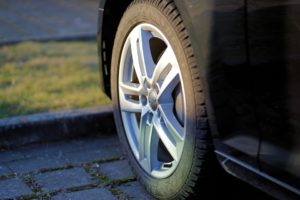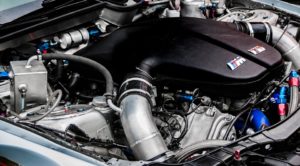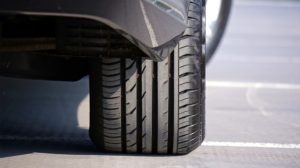Serving All Makes & Models Since 1947
651-228-1316
982 Grand Ave • St. Paul, MN 55105
Mon-Fri: 7am - 6pm
Windshield Wipers and Noticing an Issue
 Windshield wipers are an often overlooked but critical safety feature in any vehicle. They provide clear visibility during rain, snow, and other adverse weather conditions, ensuring a safe driving experience. However, over time, windshield wipers can deteriorate and fail, compromising their ability to keep your windshield clean and obstruct-free. Recognizing the signs of failing wipers is essential to maintain your safety on the road.
Windshield wipers are an often overlooked but critical safety feature in any vehicle. They provide clear visibility during rain, snow, and other adverse weather conditions, ensuring a safe driving experience. However, over time, windshield wipers can deteriorate and fail, compromising their ability to keep your windshield clean and obstruct-free. Recognizing the signs of failing wipers is essential to maintain your safety on the road.
One of the most apparent signs of failing wipers is streaking. If your wipers leave streaks or smears on the windshield, even when they are in operation, it indicates that the blades have worn out or become damaged. Streaks can obstruct your view and reduce visibility, posing a potential hazard.
Another sign of failing wipers is skipping or jumping across the windshield. When the wiper blades do not glide smoothly and instead skip or bounce, it suggests that the blades are worn or have lost their flexibility. This irregular motion leads to inadequate clearing and leaves portions of the windshield uncleaned.
Windshield Wipers and Odd Noises
Unusual noises during wiper operation, such as squeaking or chattering, are also indicative of failing wipers. These noises typically result from damaged or worn-out blades that can no longer effectively clear the windshield. The friction caused by deteriorated blades can generate these sounds, distracting the driver and reducing the wipers’ efficiency.
Decreased wiping performance is another sign of failing windshield wipers. If your wipers are no longer able to remove water or debris effectively, leaving behind residue or areas of the windshield untouched, it is a clear indication that the blades need replacement. Insufficient clearing compromises your visibility and increases the risk of accidents.
Wear and Tear
Additionally, visible wear and tear on the wiper blades, such as cracks, tears, or uneven edges, signal that they are no longer functioning optimally. Exposure to environmental factors like sunlight and harsh weather conditions can cause the rubber on the blades to degrade over time. Damaged blades cannot maintain proper contact with the windshield, leading to subpar performance.
In conclusion, recognizing the signs of failing windshield wipers is crucial for your safety while driving. If you observe streaking, skipping, unusual noises, reduced wiping performance, or visible damage, it is time to replace your wiper blades. Regular inspection and maintenance of your wipers will ensure clear visibility and a safer driving experience, especially in adverse weather conditions. Don’t underestimate the importance of functioning wipers and address any signs of failure promptly.
Tire Inspections and Why they are Beneficial
 Tire inspections are an important aspect of vehicle maintenance that should be done regularly. The benefits of tire inspections include improved safety, cost savings, and better performance.
Tire inspections are an important aspect of vehicle maintenance that should be done regularly. The benefits of tire inspections include improved safety, cost savings, and better performance.
One of the most important benefits of tire inspections is improved safety. Tires are the only part of a vehicle that comes into contact with the road, making them critical to safe driving. Regular inspections can help detect any signs of wear and tear or damage, such as punctures, cuts, or bulges. These issues can cause tire blowouts or failures, which can be dangerous and even deadly. By catching these problems early on, you can take the necessary steps to address them before they become more serious.
Tire Inspections and the Benefits
Regular tire inspections can also help save you money in the long run. By detecting and addressing issues early, you can avoid more expensive repairs or replacements down the line. For example, underinflated tires can wear out faster, requiring more frequent replacements. By regularly checking and maintaining proper inflation levels, you can extend the life of your tires and avoid the need for premature replacements. Additionally, maintaining good tire pressure can also improve fuel efficiency, saving you money on gas.
Another benefit of the inspections is better performance. Properly inflated and maintained tires can improve your car’s handling, traction, and overall performance. This is because underinflated tires can cause uneven wear, which can lead to alignment issues and affect the way your car handles. Additionally, properly inflated tires can reduce rolling resistance, which in turn can improve fuel efficiency.
Regular inspections can also help you stay in compliance with state and federal regulations. Many states require regular tire inspections as part of their safety inspections, and failure to comply can result in fines or other penalties.
In conclusion, regular tire inspections are crucial for maintaining the safety, performance, and cost-effectiveness of your vehicle. By taking the time to inspect your tires regularly, you can catch any issues early and avoid more expensive repairs or replacements down the line. Additionally, you can ensure that your vehicle is in compliance with state and federal regulations, keeping you safe and on the right side of the law.
Suspension system and noticing an Issue
 The suspension system and shocks in your car play an essential role in providing a smooth and comfortable ride. They help to absorb the impact of bumps and uneven roads. Also ensuring that your car remains stable and controllable. However, like all components of your vehicle, shocks can wear out over time. It’s important to know how to tell if they’re bad so that you can have them replaced before they cause further damage.
The suspension system and shocks in your car play an essential role in providing a smooth and comfortable ride. They help to absorb the impact of bumps and uneven roads. Also ensuring that your car remains stable and controllable. However, like all components of your vehicle, shocks can wear out over time. It’s important to know how to tell if they’re bad so that you can have them replaced before they cause further damage.
Here are some signs that your shocks may be bad:
- Rough ride: If you feel every bump and jolt in the road, it’s a clear indication that your shocks are bad. A rough ride can make driving uncomfortable. It can also cause additional wear and tear on other components of your car.
- Nose diving: When you come to a sudden stop, notice that the front of your car dips down. It’s a sign that your shocks are worn out. This is also known as “nose diving,” and it can be dangerous because it affects your car’s ability to stop quickly.
- Uneven tire wear: Shocks are responsible for keeping your tires in contact with the road. If your shocks are bad, your tires will bounce around more than they should. This ends up causing uneven wear on the treads. This can also lead to poor handling and reduced traction.
- Fluid leaks: If you notice oil or fluid leaking from your shocks, they need to be replaced. This is because the fluid helps to keep the shocks operating smoothly. A leak can lead to damage to the shock absorber.
- Noisy suspension: If you hear a knocking or rattling sound coming from your suspension when driving on bumpy roads, it’s a sign that your shocks are worn out. This noise is caused by the shocks not being able to properly absorb the impact of the road, leading to excess movement and noise.
Suspension Issues to be Aware Of
If you’re experiencing any of these symptoms, it’s important to take your car to a mechanic to have your shocks inspected. Your mechanic will be able to determine if your shocks need to be replaced and provide you with an estimate for the cost of the repairs.
Shocks play a critical role in ensuring a smooth and safe ride in your car. It’s important to be aware of the signs that they may be worn out so that you can have them replaced. This is important before they cause further damage to your vehicle. Remember to always have your car inspected regularly. This ensures that all components are functioning correctly, and to address any issues as soon as they arise.
Spring Maintenance and Preventing Potential Issues with your Car
 Spring is a season of rejuvenation and renewal. As the weather warms up and the snow and ice melt away, it’s an ideal time to take care of your vehicle. With the harsh winter weather conditions, your car may have taken a beating, and it’s important to ensure that it’s in good shape. Here are some reasons why vehicle maintenance is beneficial in the spring:
Spring is a season of rejuvenation and renewal. As the weather warms up and the snow and ice melt away, it’s an ideal time to take care of your vehicle. With the harsh winter weather conditions, your car may have taken a beating, and it’s important to ensure that it’s in good shape. Here are some reasons why vehicle maintenance is beneficial in the spring:
- Potholes: Spring is notorious for potholes. The fluctuating temperatures and the melting of snow and ice create cracks and potholes on the roads. Hitting a pothole can damage your vehicle’s tires, suspension, and alignment, leading to costly repairs. Regular maintenance and inspections can help detect any damage before it becomes a bigger problem.
- Salt and debris: During the winter months, salt and other chemicals are used to melt snow and ice on the roads. While it helps with traction, it can also cause damage to your car’s undercarriage, leading to rust and corrosion. Regular cleaning and inspection of the undercarriage can help prevent any long-term damage.
- Tire pressure: The temperature changes during the winter months can cause tire pressure to drop. Driving on underinflated tires can lead to reduced fuel efficiency and increased wear and tear on your tires. Checking your tire pressure regularly and inflating them to the recommended level can improve handling and safety on the road.
- Fluids: Winter weather can take a toll on your car’s fluids. Checking and changing your car’s fluids, such as oil, coolant, and transmission fluid, can improve your car’s performance and extend its lifespan.
- Battery: The cold weather can also affect your car’s battery. Regular maintenance and inspection of your battery can help detect any issues before they become a problem. It’s also a good idea to have your battery tested to ensure that it’s working properly.
In conclusion, spring is an ideal time to prioritize vehicle maintenance. Regular maintenance and inspections can detect any damage before it becomes a more significant problem, saving you time and money in the long run. Taking care of your car’s tires, fluids, and battery can improve your car’s performance, safety, and longevity. So, take advantage of the beautiful weather and take care of your car this spring.
Pothole Damage if you Hit one
 Hitting a pothole can cause havoc on your vehicle. Additionally, hitting a pothole can cause the vehicle’s wheels to become misaligned, which can affect the vehicle’s handling and stability. This can be especially dangerous if the vehicle is traveling at high speeds or if the road conditions are wet or icy.
Hitting a pothole can cause havoc on your vehicle. Additionally, hitting a pothole can cause the vehicle’s wheels to become misaligned, which can affect the vehicle’s handling and stability. This can be especially dangerous if the vehicle is traveling at high speeds or if the road conditions are wet or icy.
Damage when you hit a Pothole
Also, hitting a pothole can cause damage to the vehicle’s suspension system, tires, and wheels. The impact can cause the suspension to compress and rebound rapidly, putting stress on the shocks, struts, and other components. It can also cause the tires to become punctured or damaged and the wheels to become bent or cracked. This damage can be costly to repair and can affect the overall safety and performance of the vehicle.
In addition to the immediate effects of hitting a pothole, there are also long-term consequences. Potholes can worsen over time if they are not repaired, and can eventually become large enough to cause serious damage to vehicles. They can also contribute to wear and tear on the road surface, leading to more potholes and a rougher ride for drivers. Always make sure to bring your vehicle in for an inspection incase you hit one. We can give it a bumper to bumper inspection. Also, we can check for any parts or components that have become damaged on the vehicle.
Overall, hitting a pothole can be an unpleasant and potentially costly experience for drivers and their vehicles. To minimize the risk of hitting a pothole, it’s important to stay alert while driving, especially in areas where potholes are common. If you do hit a pothole, be sure to check your vehicle for any signs of damage and have it repaired as soon as possible to prevent further damage and ensure your safety on the road.
Driving in the Winter
 Driving in the winter presents a number of challenges that can make it difficult to navigate the roads safely. One of the biggest challenges is the presence of snow and ice on the roads. These conditions reduce traction and make it more difficult to control your vehicle, increasing the risk of accidents. Snow and ice can also obscure road markings and make it harder to see hazards, making it more difficult to navigate the roads safely.
Driving in the winter presents a number of challenges that can make it difficult to navigate the roads safely. One of the biggest challenges is the presence of snow and ice on the roads. These conditions reduce traction and make it more difficult to control your vehicle, increasing the risk of accidents. Snow and ice can also obscure road markings and make it harder to see hazards, making it more difficult to navigate the roads safely.
Driving in the winter and visibility
Another significant challenge of driving in the winter is reduced visibility. Snow, sleet, and fog can significantly impair your ability to see the road ahead and other vehicles on the road. This can make it more difficult to anticipate hazards and react quickly, increasing the risk of accidents. In addition, reduced visibility can make it more difficult to navigate unfamiliar roads, increasing the risk of getting lost or taking a wrong turn.
Dropping Temperatures
Cold temperatures are another challenge of driving in the winter. Cold weather can negatively affect your vehicle’s performance, leading to issues such as a dead battery, frozen fuel lines, or malfunctioning brakes. It can also make it uncomfortable to drive, especially if your car’s heater is not functioning properly. Cold temperatures can also make it more challenging to stay alert and focused on the road, increasing the risk of accidents.
Finally, driving in the winter can be challenging due to the behavior of other drivers on the road. Not all drivers may be prepared for winter driving conditions, and some may not adjust their driving habits accordingly. This can increase the risk of accidents and make it more challenging to navigate the roads safely. It’s important to remain vigilant and aware of the drivers around you, as well as to adjust your own driving habits to ensure that you are driving safely and responsibly in all conditions.
Tires and what to Check on them
 Tire checks are important to do for your vehicle. Tires are one of the most important things in a car. They provide the ride and stability on your road trip, and they can also be expensive to replace. But sometimes, the tires just don’t hold up. Check for any problems with your tires before they ever become a big issue. By doing this, you can avoid costly repairs down the line and keep your car running smoothly for years to come.
Tire checks are important to do for your vehicle. Tires are one of the most important things in a car. They provide the ride and stability on your road trip, and they can also be expensive to replace. But sometimes, the tires just don’t hold up. Check for any problems with your tires before they ever become a big issue. By doing this, you can avoid costly repairs down the line and keep your car running smoothly for years to come.
Tire Checks
Tires can play a big role in your vehicle and can affect the performance of your car. When it comes to tires, make sure to pay attention to the tread wear, condition, air pressure, and overall handling of the tires.
Tires Can Cause Damage
Tires can cause damage if they’re not inflated properly, and if they don’t have enough air pressure. If you drive on a road with worn tires, it may be dangerous to your vehicle and yourself. Always check the air pressure to ensure that they are properly inflated. Tires can cause damage if they become over-inflated, too hot, or have a low pressure. If your tires are in any of these conditions, you need to replace them as soon as possible. You can also contact us and we can inspect your vehicle for you. This will help ensure that it is in the best condition possible when you will need to drive.
Check the Tread Wear
A quick and easy way to check the tread wear is to take a penny and place it upside down in the groove of the tread. If you can see the top of Lincoln’s head, then the tread has worn down. The tires will need to be replaced. Sometimes you can get more life out of them by rotating them. No matter what, always contact us so we can check the vehicle for you.
Winter Weather Driving Tips to Know
Winter weather can vary from location to location. While it may be ideal weather when you leave, it then might be a blizzard by the time you come back. It might be cold outside, but that doesn’t mean you can’t enjoy your ride in the car. Here are a few tips for making the most of your winter drive!
How to Drive in Winter Weather
For the best driving experience in winter weather, be sure to take the following tips into account. Be aware of your surroundings and make sure you know where you are going. Winter driving can be difficult, so take it easy on the open roads. Be prepared for conditions that may affect your vehicle, including snow, ice, and rain. Make sure all necessary equipment is available and that you have enough gas to get through the trip. Ensure your vehicle is properly maintained and check fluid levels frequently. Follow the regular maintenance schedule for your vehicle. If you are not sure how often this should be, make sure to contact us. We can advise you on a schedule for your vehicle.
Improving your Safety
When driving in winter weather, be sure to take care of your own safety and that of other drivers. Make sure to use the proper driving techniques. In addition, make sure you have an adequate supply of fuel for your vehicle. Keep an eye on the weather conditions ahead of time to get the most out of your drive. By planning your trip accordingly, you can minimize issues along the way. You can also prepare yourself for what could potentially be tough roads this winter.
Winter weather can be an enjoyable experience, but it can be tough to stay on the road. Make sure to follow driving tips such as slowing down and leaving enough space between you and the vehicle in front of you. Doing so can help you to have a safe and enjoyable winter.
Vehicle Maintenance Schedules and What to Inspect
 Vehicle maintenance is needed for your car. By staying up to date on the schedule, it will help keep your vehicle operating efficiently. If you ignore maintenance, the vehicle will start to fail. That’s why it’s so important to keep your vehicle in top condition so that it can serve you for years to come. Here are some tips on how to achieve excellence in vehicle maintenance:
Vehicle maintenance is needed for your car. By staying up to date on the schedule, it will help keep your vehicle operating efficiently. If you ignore maintenance, the vehicle will start to fail. That’s why it’s so important to keep your vehicle in top condition so that it can serve you for years to come. Here are some tips on how to achieve excellence in vehicle maintenance:
How to Keep Your Vehicle Running smoothly
There are many types of vehicles, each with its own unique set of mechanics and needs. To keep your vehicle running smoothly, be sure to understand what type of vehicle it is and how to address common issues. Remember to look at the owner’s manual for your vehicle. By doing so, you will know when the vehicle should be brought in for maintenance, and what should be done. You can also contact us. We will set up a schedule for your vehicle of what should be inspected. Doing so can help the tires, brakes, steering, and even the fluids operate in the best condition possible for you.
How to Keep Your Vehicle Running Properly
To keep your vehicle running properly, follow these tips:
1) Know the basics: understanding the different system functions will help you troubleshoot problems more easily and efficiently.
2) Clean your car regularly: keeping the interior and exterior clean will reduce wear on components and help ensure optimal operations; also, this will reduce the risk of air infiltration which can lead to engine failures or worse.
3) Maintain fluids levels regularly: maintaining fluid levels within specs will help prevent water damage or other possible malfunctions; also, this will keep your drive train lubricated and accurate during use.
4) Check brakes regularly: brake pads need to be replaced based how many miles or how often you drive. By contacting us, we can advise you on the correct schedule.
Keeping your car running smoothly is a key part of maintaining it. If you ever notice anything out of the norm with the vehicle, make sure to contact us. We can inspect it for what the issue is, and help you get back on the road again!
Tire Care for your Car
Tire care is important. When it comes to keeping your tires in great shape, you need the right tools. That’s why we’ve put together a comprehensive tire care article that includes everything from Tire Repair Techniques to Tire Maintenance Tips. Not only will this help you keep your tires in top condition, but it also provides tips on how to save money and improve your driving experience. So whether you’re a first-time owner or an experienced driver, we have the guide for you.
Tire care
Tires are one of the most important pieces of equipment a car has. When properly cared for, they can last for years. Tires need to be kept clean and free of debris to function properly. Here are some tips on how to keep your tires in great shape.
Always check the tire pressure before leaving home. If it is below the recommended pressure, your tires may not be inflated correctly and may suffer from wear and tear over time. Also make sure the tires are not over inflated either. This can cause them to puncture and pick up sharp objects.
Don’t forget the tread wear
Also remember to check the tread wear for your car. This can be done as easily as using a penny. Place the penny upside down in the groove of the tread. If you can see the top of Lincoln’s head, then the tread has worn down. Another way to tell if there are issues with the tires can be how the vehicle handles. If it pulls to one side or the other, then the tires could be the culprit. Tires that are under inflated will pull to one side. Also, if the tread wear is uneven, you will notice that on your vehicle handles as well.
No matter what issue you might notice, always contact us. We can inspect the tires to ensure you have a safe and reliable ride this winter.


